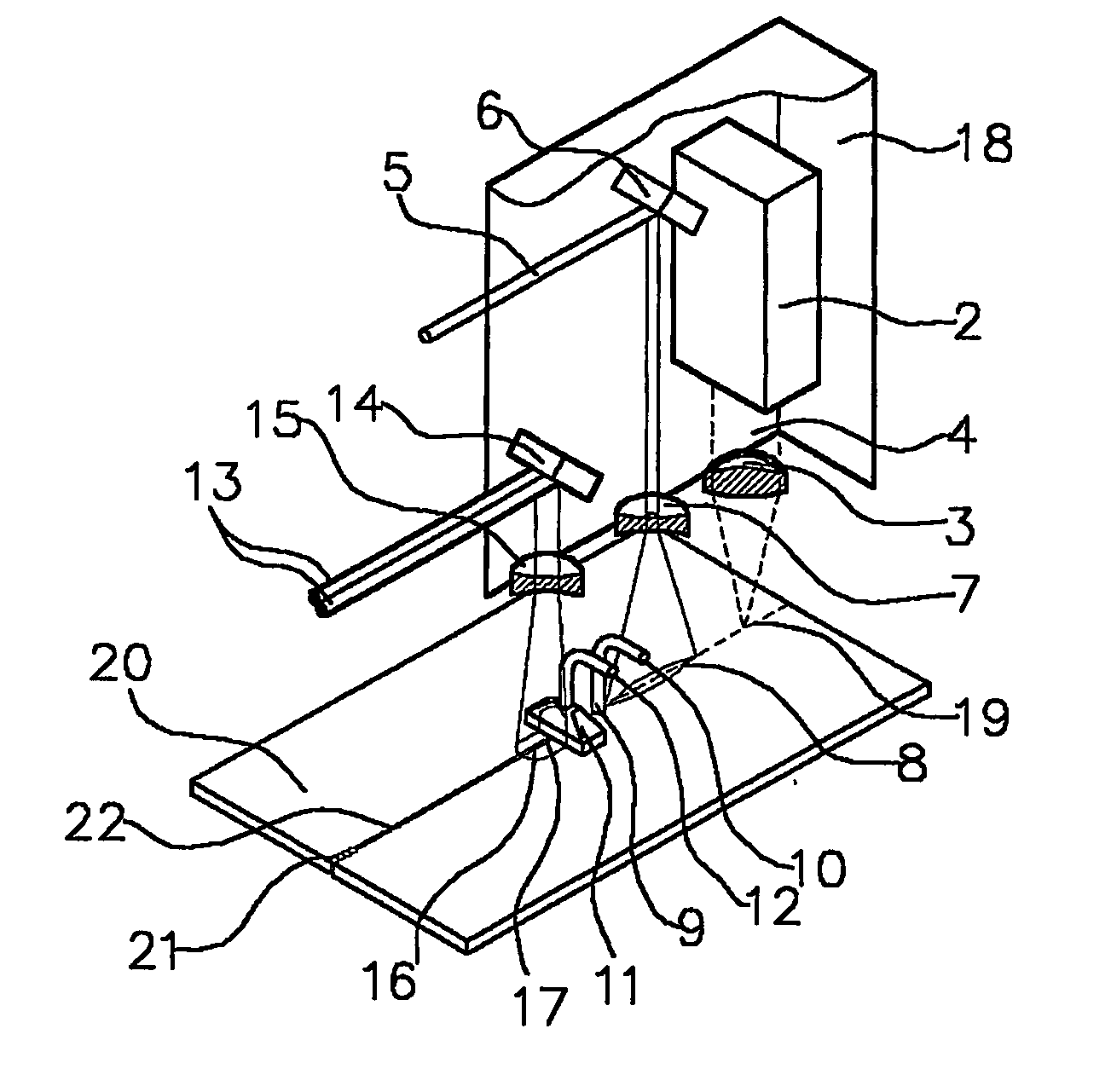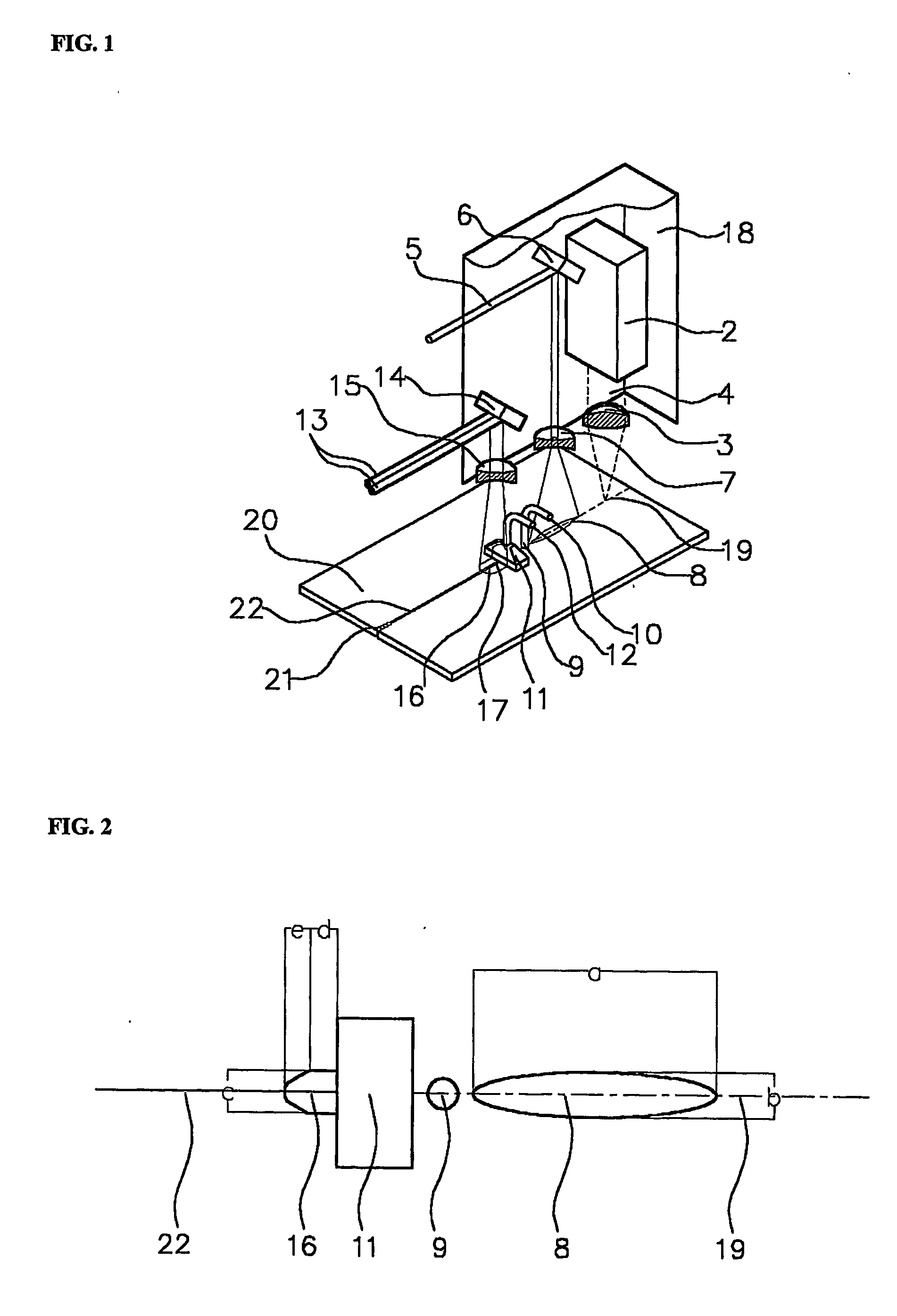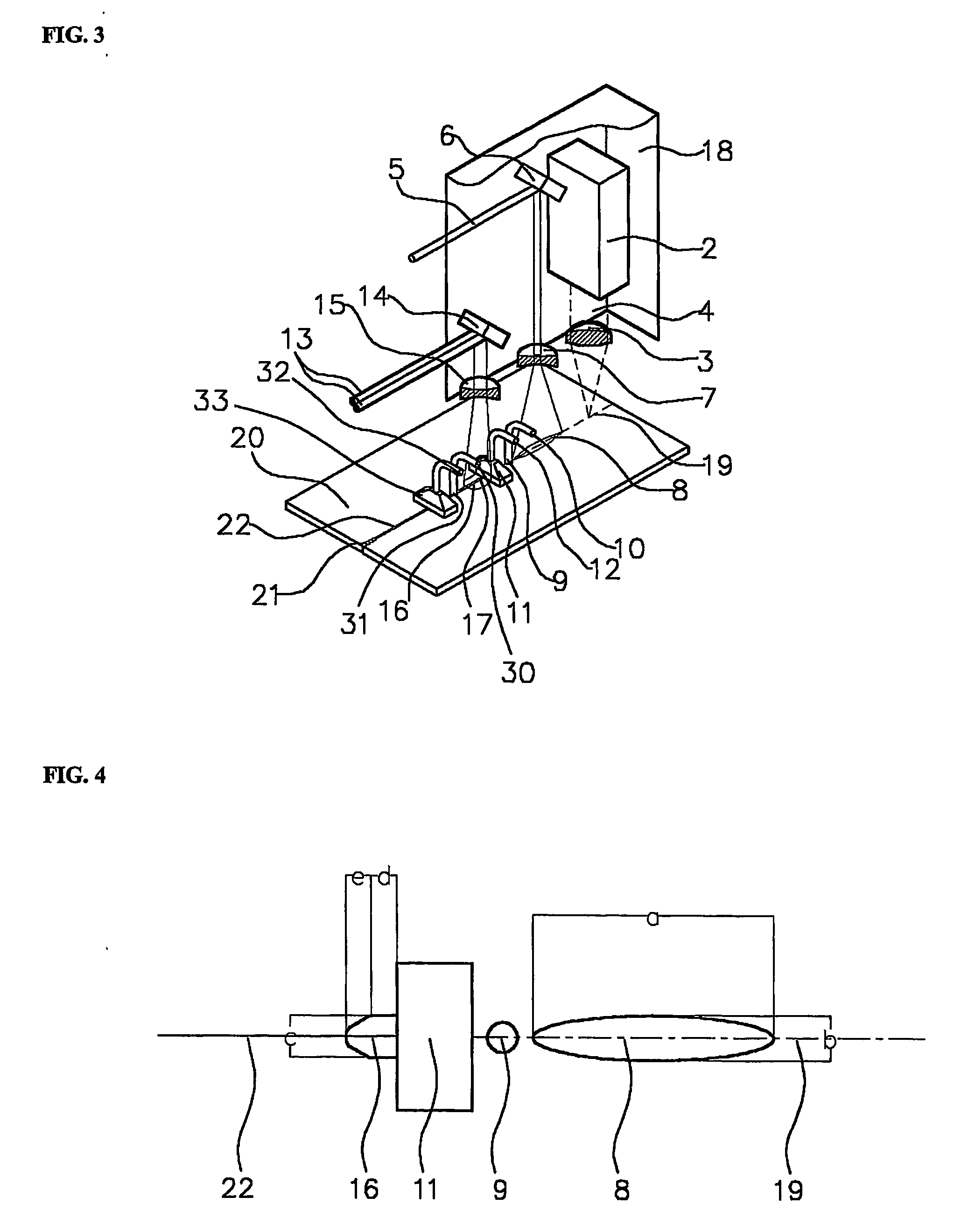Glass-plate cutting machine
- Summary
- Abstract
- Description
- Claims
- Application Information
AI Technical Summary
Benefits of technology
Problems solved by technology
Method used
Image
Examples
example 1
[0102] A transfer rate of a laser head was set to 250 mm / sec.
[0103] A fourth high frequency (266 μm, 10 kHz, 1.8 W) from an Nd:YV04 laser oscillator of Coherent Co. was collected by a convex lens and a focal point thereof was irradiated to an initiation end of an expected cutting line of a glass plate to the size of about 0.3 mm, to obtain the initial cracks.
[0104] A first carbon dioxide laser beam was irradiated while a pulse width of a pulse oscillator having an average output of 250 W of 10 kHz was controlled to 40% of a distance between centers of the pulse (hereinafter, referred to as ‘operation condition’, maximal 60%).
[0105] An irradiation area 141.6 mm2 of an oval shown in FIG. 3 was calculated by measuring ‘a’ as a long diameter and ‘b’ as a short diameter.
[0106] Then, water was pressurized under an air pressure of 3 kg / cm2 and sprayed in a haze state, to generate a scribe line.
[0107] A plane irradiation density in the oval was calculated to 0.386 joule / mm2, and the sc...
example 2
[0108] The present example was performed in the same manner as in Example 1, with the exception that the operation condition and the irradiation area of the first carbon dioxide laser beam were decreased to 13% and 59.2 mm2, respectively. As for the results, a scribe line with no problems was generated.
example 3
[0109] The present example was performed in the same manner as in Example 1, with the exception that the operation condition and the irradiation area were increased to 52% and 162.9 mm2, respectively, and the plane irradiation density was maintained at 0.442 joule / mm2. As for the results, a scribe line with no problems was generated.
PUM
| Property | Measurement | Unit |
|---|---|---|
| Fraction | aaaaa | aaaaa |
| Pressure | aaaaa | aaaaa |
| Length | aaaaa | aaaaa |
Abstract
Description
Claims
Application Information
 Login to View More
Login to View More - R&D
- Intellectual Property
- Life Sciences
- Materials
- Tech Scout
- Unparalleled Data Quality
- Higher Quality Content
- 60% Fewer Hallucinations
Browse by: Latest US Patents, China's latest patents, Technical Efficacy Thesaurus, Application Domain, Technology Topic, Popular Technical Reports.
© 2025 PatSnap. All rights reserved.Legal|Privacy policy|Modern Slavery Act Transparency Statement|Sitemap|About US| Contact US: help@patsnap.com



